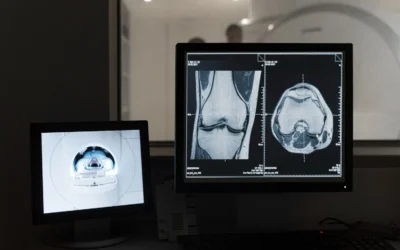The Centers for Disease Control and Prevention (CDC) recently highlighted a critical issue preventing women from receiving potentially life-saving mammograms. Contrary to common assumptions, the primary barriers are not related to cost or access issues. Instead, health-related social needs, such as food insecurity or unreliable transportation, are the significant factors deterring women from these essential screenings. This revelation was presented at the HIMSS 2023 conference and is backed by a study published in the CDC’s Vital Signs.
Table of Contents
The Scope of the Problem
According to the study, among screening-eligible women, only about 65% of those facing three or more social impediments are current with their mammogram appointments. Dr. Lisa C. Richardson, the director of the CDC’s Division of Cancer Prevention and Control, emphasized the importance of addressing these barriers to achieve higher breast cancer screening rates for all women.
“If we are to achieve higher breast cancer screening for all women, we have to look at all the possible challenges women face in getting mammograms,” Richardson stated in an April 9 announcement. She stressed that healthcare providers need to assess whether women have health-related social needs and assist them in obtaining necessary services. “Every woman should be able to get screened for breast cancer without barriers.”
The Study’s Methodology
Richardson and her team analyzed 2022 data from the CDC’s Behavioral Risk Factor Surveillance System. They aimed to estimate mammography use within the previous two years and correlate this information with various social determinants of health. The study’s final sample included 117,466 women, representing 82% of female respondents. Among those aged 50 to 74, state-level mammography use ranged from 64% to 85.5%.
Key Findings
The study found that having health insurance and a personal healthcare provider were significantly associated with undergoing a mammogram in the past two years. Mammography prevalence was about 83% among women with no adverse social determinants of health or health-related social needs. Conversely, factors such as life dissatisfaction, social isolation, reduced employment hours, receiving food stamps, lacking reliable transportation, and costs as a barrier to access were all strongly associated with failing to undergo mammography.
Implications for Radiology Providers
For radiology providers, the key takeaway from this study is the importance of looking beyond traditional interventions, such as text reminders or brochures, to increase breast cancer screening use. The authors suggest that healthcare facilities, providers, and public health programs develop policies and effective practices to conduct risk assessments for adverse social determinants of health (SDOH) and health-related social needs (HRSNs).
Addressing issues like cost to access healthcare, social isolation, lack of reliable transportation, and food insecurity could significantly increase the prevalence of mammography and other preventive health services.
Addressing the Barriers
To effectively address these barriers, a multifaceted approach is necessary:
Comprehensive Risk Assessments
Healthcare providers should integrate comprehensive risk assessments into routine care to identify women at risk due to adverse social determinants. These assessments should consider factors like economic stability, education, social and community context, health and healthcare, and neighborhood and built environment.
Community Partnerships
Forming partnerships with community organizations can help address some of these barriers. For instance, collaborating with local transportation services to provide reliable options for women to travel to their appointments can make a significant difference. Similarly, partnerships with food banks or social services can help address food insecurity, reducing one of the critical barriers to health.
Policy Development
Developing policies that facilitate access to healthcare for all women, regardless of their social circumstances, is crucial. This could include policies that provide financial assistance for those unable to afford screenings, or initiatives that ensure all women have a personal healthcare provider to guide them through the screening process.
Education and Outreach
Educating women about the importance of mammograms and the availability of assistance programs can help mitigate some of the barriers. Outreach programs that inform women about where they can get help with transportation, food insecurity, and other social needs can empower them to seek the healthcare they need.
Conclusion
The CDC’s recent findings underscore the need for a broader approach to healthcare that considers the social determinants impacting women’s ability to undergo mammography. By addressing health-related social needs such as food insecurity and lack of reliable transportation, healthcare providers can help ensure that all women have the opportunity to receive lifesaving breast cancer screenings. It is imperative that the healthcare community works together to develop effective strategies and policies to overcome these barriers, ultimately improving health outcomes for women nationwide.





0 Comments